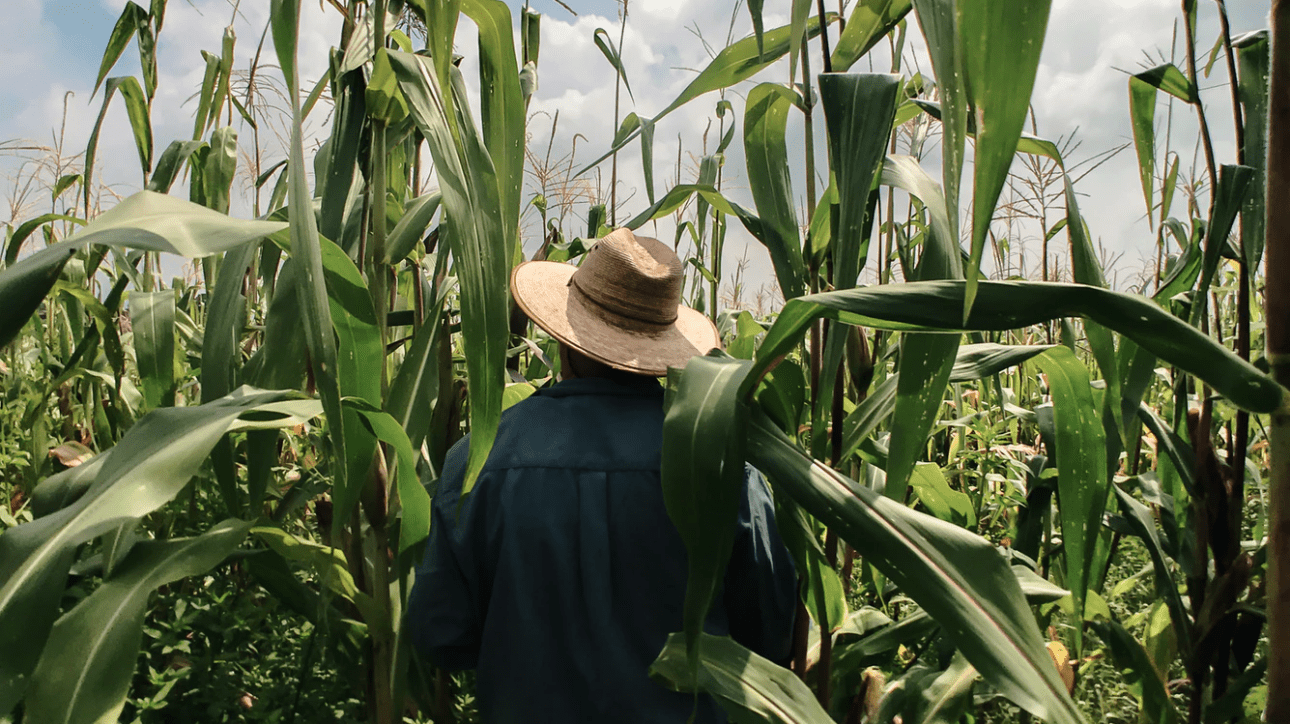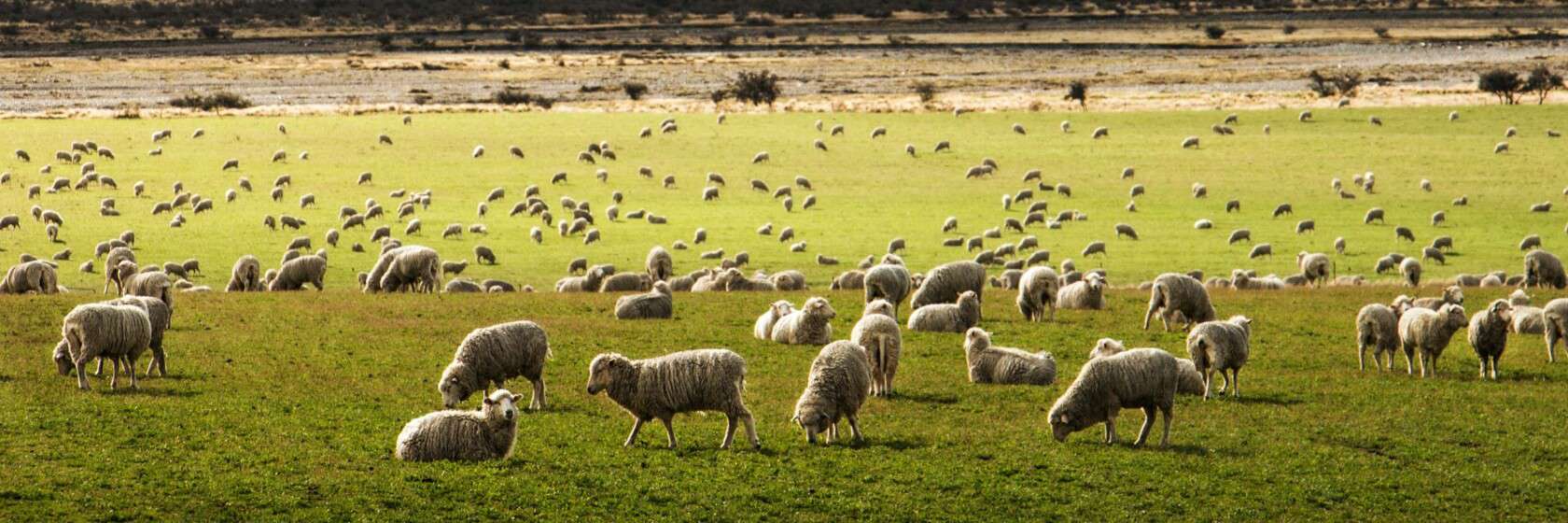Our Story
We believe in materials sourcing that respects our planet, its ecosystems, and its communities.

From the clothing we wear to the fabrics in our homes, fashion and textiles touch our lives every day. We exist to make sure that the materials used to make them are produced in a way that supports our planet, its ecosystems, and its communities.
Most of the familiar fibers and raw materials in the fashion and textile industry today, including cotton, wool, viscose, polyester, and more, come from farming, forests, or fossil fuels. These are three of the biggest focus areas in the challenge to limit global warming and mitigate the most serious impacts of climate change.
Our work focuses on how these resources are farmed, sourced, and extracted from the earth, plants, and animals. This is known as Tier 4 of the supply chain, and it accounts for 24% of the industry’s carbon footprint. Our goal is to reduce the emissions that come from these processes by 45% by 2030. We’ve developed a strategy to help us get there, and we call it Climate+.
Ultimately, our vision is a global fashion and textile industry that gives back more than it takes from our planet. This means positively impacting the lands and hands that uphold it, while benefiting soil health, water, and biodiversity.
HISTORY
We’ve been accelerating action for over 20 years.
Founded as Organic Exchange in 2002, we’ve grown to become a global non-profit working closely with every sector involved in the fashion and textile supply chain. We expanded our focus from organic cotton in 2010 to include a diverse selection of fibers and materials so we can have an even greater impact on the planet.
2022
- We update our visual identity, strengthening our communications with a new look and feel.
- We publish the Regenerative Agriculture Landscape Analysis, the first framework for the fashion and textile industry to understand the benefits of regenerative agriculture.
- All Fashion Pact reporting is integrated into our Corporate Fiber & Materials Benchmark.
- We welcome Ashley Gill as Chief Strategy Officer and Lee Martin as Chief Business Officer.
- Our global membership community grows to over 800.
- We celebrate 20 years of accelerating action across the industry.
- We host our annual conference in Colorado Springs from November 14-18. This is our largest conference to date, with over 1800 attendees online and in person.
2021
- We launch the Preferred Fiber and Material Matrix to our members, providing guidance to inform sourcing decisions using the best available data.
- We launch the Biodiversity Benchmark, recognizing the connection between climate and nature and helping companies to plan and measure their actions.
- We launch the Responsible Alpaca Standard (RAS).
- At COP26, we urge policymakers to consider working with the textile and footwear industry to create trade mechanisms that encourage the use of environmentally preferred fibers and materials through our COP26 Sustainable Trade Initiative.
- We host the inaugural Ryan Young Climate+ Awards, recognizing five leaders driving progress towards a lower-impact textile industry.
- We take ownership of the Global Fibre Impact Explorer (GFIE), a tool born out of a partnership between Google and WWF to assess risk by fiber and region.
2020
- We welcome our new Chief Operating Officer, Claire Bergkamp.
- Gap Inc. entrusts us with updating its Preferred Fiber Toolkit, which will go on to become our Preferred Fiber and Materials Matrix.
- We release the Responsible Mohair Standard (RMS).
- We launch the Leather Impact Accelerator (LIA).
- We join the apparel alliance, a partnership to align goals, solutions, tools, and reporting.
- Our global member community reaches 500.
2019
- We launch the Material Change Index.
- We create The Hub, an online member-only community platform.
- We launch the Climate+ strategy with our former Chief Operating Officer, the late Ryan Young.
2018
- We establish the Preferential Tariff Project (PTP) to explore incentive opportunities in the form of a tax credit or duty reduction of an imported component or finished, certified product, within the US.
- The first Responsible Wool Standard (RWS) products hit the shelves.
- We launch the Responsible Leather Round Table.
- We add a circularity module to our benchmark, recognizing its importance in reducing impact at the raw material level.
- We join the Fashion Conveners, a new initiative to bring alignment and collaboration among non-profit organizations.
2017
- We send out a call to action for the fashion and textile industry to adopt the United Nation’s Sustainable Development Goals.
- Our standards are recognized at a national level for the first time when the Responsible Wool Standard (RWS) is adopted by the Argentine wool industry.
- We are involved in the launch of the Sustainable Cotton Communique, which we later take over to create the Sustainable Cotton Challenge.
- We organize the Recycled Polyester Commitment (now the Recycled Polyester Challenge) with more than 45 fashion and textile companies.
2016
- We launch the Learning Center, an online repository of tools and resources including reports, data, analytics, and videos.
- We release the Responsible Wool Standard (RWS).
- We co-found the Organic Cotton Accelerator (OCA) to help unleash organic cotton’s potential for positive impact, from field to fashion, for people and the planet.
2015
- Our global member community grows to 100.
- We launch the Preferred Fiber and Materials Benchmark (now the Corporate Fiber & Materials Benchmark) to help companies measure how they can integrate a preferred fiber and materials strategy into their business.
- We publish Material Snapshots to share information on 28 different fibers and materials.
2014
- We release the Responsible Down Standard (RDS).
2013
- We release the Organic Content Standard (OCS), combining the existing OE 100 and OE Blended standards.
- We release the Recycled Content Standard.
- We launch the Certification Challenge to encourage brands to review their current integrity strategies for products made with more sustainable materials.
- We build the Knowledge Center to provide the industry with the resources it needs to make informed sourcing decisions.
2012
- We develop our chain of custody standard, the Content Claim Standard (CCS).
- We build an interactive database of organic cotton growers and launch the “Find a Producer” tool.
- We create the Organic Cotton Round Table.
2011
- We co-found CottonConnect, an on-the-ground program designed to train and educate farmers.
- We take on ownership of the Global Recycled Standard (GRS) from Control Union.
2007
- We release the OE Blended standard.
- Organic Exchange becomes Textile Exchange as we expand our mission into other fiber types.
2004
- The first members join our global community.
- We release our first standard for organic cotton, the OE 100.
- We publish our first Organic Cotton Market Report, giving an overview of organic cotton production that year.
- We launch our first awareness campaign to educate consumers about organic cotton farming.
2002
- Founded as Organic Exchange in 2002, we’ve grown to become a global non-profit working closely with every sector involved in the fashion and textile supply chain. We expanded our focus from organic cotton in 2010 to include a diverse selection of fibers and materials so we can have an even greater impact on the planet.extile Exchange starts out life as Organic Exchange.
- We hold our first conference in Lubbock, Texas.

LEARN MORE
We’re building reciprocal systems that work with nature.
Textile Exchange isn’t just working to minimize the negative environmental impacts of the industry. The way we lead our members is unique in how it goes beyond accounting for greenhouse gas emissions to looking at sustainability holistically. It’s about creating reciprocal systems that work with nature, not against it.